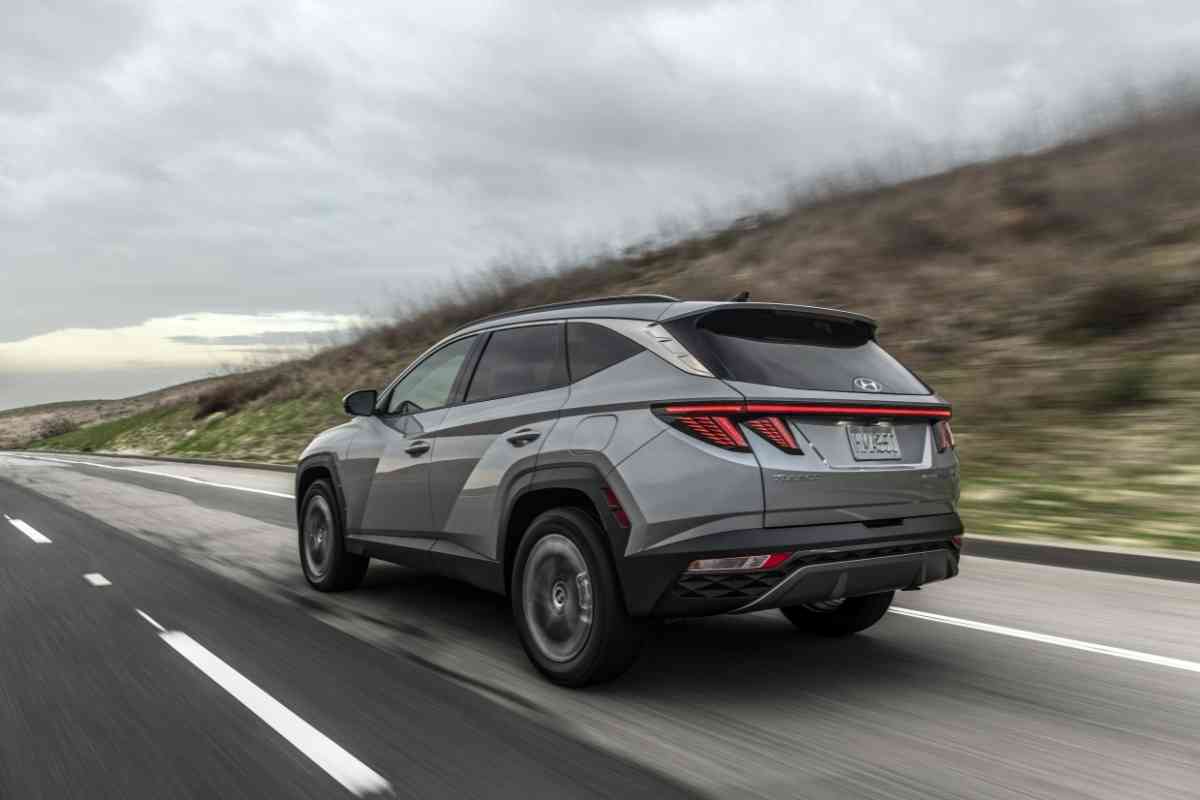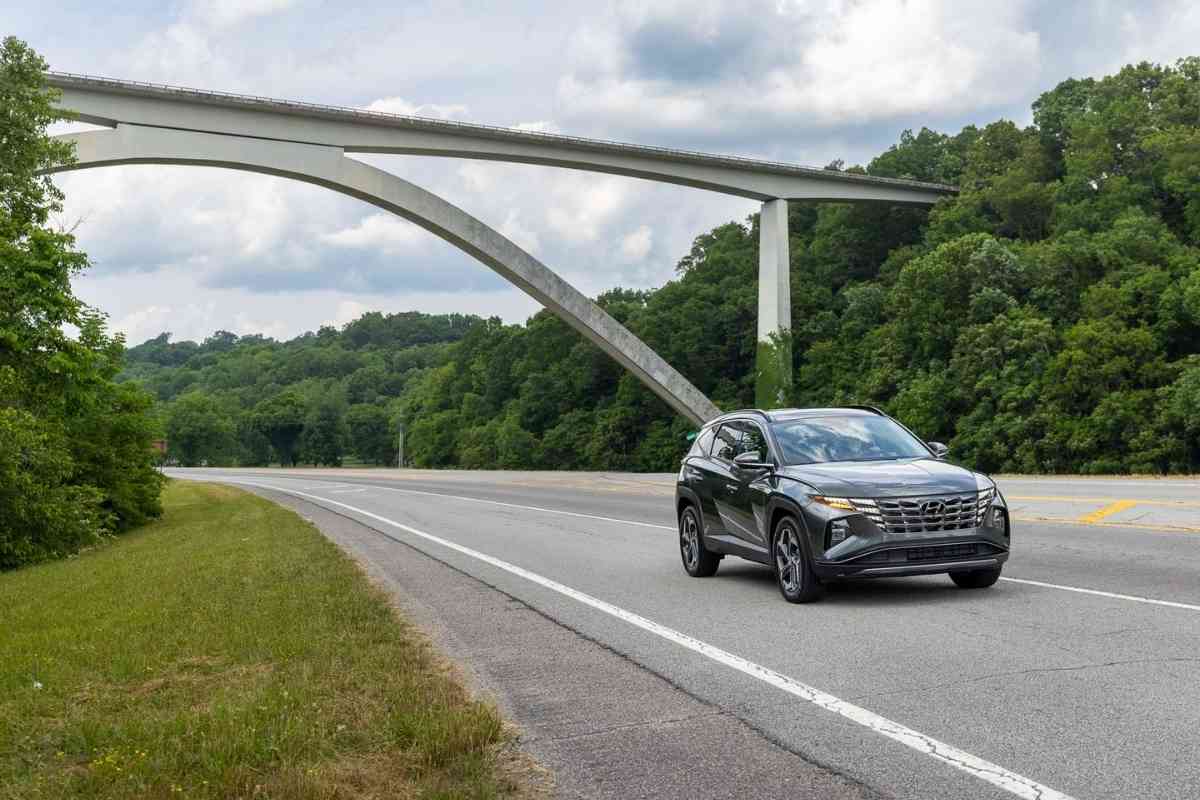7 Hyundai Tucson Years To Avoid (Why They’re The Worst)
When considering a Hyundai Tucson, it’s crucial to know which years to avoid. Our article “7 Hyundai Tucson Years To Avoid (And Why They’re The Worst)” offers an insightful look into the models that fell short, helping you make a well-informed decision.

Though the Hyundai Tucson is generally reliable, some of its model years fail to perform well. Moreover, some of the issues can be severe.
The seven Hyundai Tucson years to avoid include 2011, 2012, 2013, 2014, 2015, 2016, 2017, and 2018.

“Drive Past Myths: Get the Real Deal on Car Buying!”
🚘 Uncover 13 Car Buying Misconceptions with Our FREE Newsletter!
Plus you will get our quick tips, expert advice, and myth-busting insights delivered straight to your inbox.
Subscribe now and make informed decisions without the detours.
“Experts Hate This! Learn the Car Buying Secrets They Don’t Want You to Know. Free Subscription!”
Hyundai Tucson vehicles from these years commonly had engine failures, engine stalls, unexpected shutdowns, poor acceleration, transmission slips, battery problems, and in extreme cases – engine fires.
What Are the Hyundai Tucson Years To Avoid?
Avoid Hyundai Tucsons from 2011, 2012, 2013, 2014, 2015, 2016, 2017, and 2018. Hyundai Tucsons from these years commonly had engine failures, engine stalls, unexpected shutdowns, poor acceleration, transmission slips, battery problems, and in extreme cases – engine fires.
After extensively researching Hyundai automotive and maintenance forums, I have been able to gather enough information to determine which Hyundai Tucson years you should avoid.
My research has indicated that you should always thoroughly inspect and test drive a used Hyundai Tucson, regardless of what driver reports claim. Knowing this, here are the Hyundai Tucson years to avoid.
What Are The Causes Behind The Hyundai Tucson Years To AVoid?
In the 2000s, the Hyundai Tucson was considered to be one of the best compact crossover SUVs on the market, and it out-ranked the bulk of its competition. However, some issues started to become apparent with the Tucsons’ later generations, and Hyundai struggled to resolve these problems for years.
Buying a used car always comes with a certain amount of risk, but these risks can be mitigated by purchasing vehicles that have built a long-standing reputation for quality and reliability. With that said, there are certain Hyundai Tucson models that you should stay clear of if you want to prevent costly repairs and potential safety hazards.
2011 Hyundai Tucson
The 2011 Hyundai Tucson was known for having a series of issues, which became quite problematic for a lot of drivers. The first complaint that many 2011 Tucson owners made was that their vehicle had a poor mpg rating.
This isn’t a serious situation, but it’s frequent enough to rank this in the Hyundai Tucson years to avoid.
While Hyundai claims that this model should technically get 22/city and 31/highway, many drivers found that this was unsatisfactory for a compact crossover SUV and that the Tucson often failed to deliver on its mpg estimate.
Other drivers reported transmission issues – with choppy gear changes and occasional transmission locks. Whereas some extreme cases include complete engine failure.
In addition, some minor problems with the 2011 Hyundai Tucson include A/C malfunctions, as well as faulty electronics. Electronics components and features would reportedly fail to work properly in cold weather and some vehicle owners had to replace their back cams after just 65,000 miles.
2012 Hyundai Tucson
The release of the 2012 Hyundai Tucson followed suit with a lot of the same issues as its predecessor. Hyundai failed to resolve a lot of the key underlying problems with the 2011 model, which resulted in upwards of 120,000 Tucsons being recalled from 2011-2013.
The main reason behind the recall was engine problems. Hyundai’s 2012 Tucson experienced a plethora of engine problems that are costly and potentially dangerous.
While most people that had engine issues with their 2012 Tucsons mainly dealt with surges, complete engine failures were not uncommon. Therefore, this one of the leaders in the Hyundai Tucson years to avoid.
Purchasing a 2012 Tucson is unadvisable, even if it was recalled and redistributed, as engine issues are the most expensive repair cost that you can encounter with your vehicle.
If you do run into any issues with your Hyundai Tucson’s engine, you can expect to pay anywhere from $4,000 to $6,000 for a replacement (without the price of labor).
In addition to engine problems, the 2012 Tucson was also known for brake and electronic component malfunctions, as well as transmission slips.

2014 Hyundai Tucson
Despite the recall of so many Tucsons from 2011-2013, Hyundai was not able to clear up its major engine issues with the 2014 model. This year’s Tucson did not do much better as far as reliability, given that a lot of the same problems persisted.
One of the most common issues with the 2014 Hyundai Tucson was that the battery would drain incredibly fast and unexpectedly – resulting in drivers being unable to start their vehicles.
Aside from battery problems, this model also experienced poor acceleration. There are some rare cases where drivers reported that their 2014 Hyundai Tucson failed to accelerate at all.
The most extreme incidents of the 2014 Tucson had to do with not only motor failures but engines actually blowing up. While these were rare cases, it’s certainly enough to make me weary of all Tucsons from this year.
2015 Hyundai Tucson
The 2015 Hyundai Tucson was known for a wide variety of engine problems. Some car critics have listed this model as being one of the most unreliable compact crossover SUVs of 2015, as it triggered a lot of red flags.
To start, there was a 2015 lawsuit that encouraged the recall of Hyundai Tucson motors from this year. Many drivers experienced engine seizures and repeated stalling while operating their 2015 Hyundai Tucson.
However, the most serious incidents with this vehicle involve complete engine failure and even fire.
Other, less extreme, yet still significant issues include paint that begins to peel early, minor transmission problems, and inaccurate fuel gauge sensors, which get worse over time.
2016 Hyundai Tucson
Although some car critics initially gave the 2016 Hyundai Tucson a very high-reliability rating, it was later uncovered that this model had a substantial amount of performance issues.
The good news is that the majority of the serious engine problems such as failures and fires were resolved, but some other underlying issues remained.
Engine stalls and unexpected shutdowns were common malfunctions that a lot of 2016 Hyundai Tucson drivers had to deal with. However, the bulk of the problems were with the 2016 models that had dual-clutch, seven-speed transmissions.
Drivers who purchased a 2016 Tucson with these specs often reported that their vehicle would fail to accelerate when brought to a stop.
Aside from this, there were some other incidents with transmission problems and the same issue with paint jobs peeling off as with the 2015 Tucson model.
2017 Hyundai Tucson
After so many years of consistent faults and mechanical issues, I was surprised to find that Hyundai was still not able to fix the ongoing issues with the Tucson in 2017. The failures of the 2016 model clearly highlighted that a lot of the vehicle’s problems had to do with the faulty dual-clutch transmission system, which remained unresolved.
All in all, the majority of the issues that I found with the 2016 Hyundai Tucson were synonymous with the 2017 model. Much like its predecessor, drivers had problems with their vehicles accelerating after coming to a stop.
The stuttering transmission resulted in many car critics advising shoppers to avoid the 2017 Tucson.
It also became clear that this model had a faulty engine. The motor would get worn very quickly and this even resulted in Hyundai recalling a lot of 2017 Tucsons. Drivers also experienced problems with the vehicle stalling, making noise upon ignition, and faulty taillights.
2018 Hyundai Tucson
The 2018 Hyundai Tucson had a number of complaints from drivers – most of which had to do with the vehicle’s engine, brakes, and transmission. The most common and serious problem that was consistent with the 2018 Hyundai Tucsons was that the vehicle would stall out or completely shut down while driving.
With that said, complete engine failures were not unheard of with the 2018 model. Hyundai announced in 2020 that the majority of the issues with Tucsons from this generation had to do with the anti-lock brake hydraulic electronic control unit, which can cause engine failure and engine fire when it corrodes and eventually short circuits.
The Best Hyundai Tucson Years
Hyundai certainly hit a major rough patch when manufacturing the Tucson from 2011 to 2018. While you should avoid buying a Tuson from these years at all costs, models that were released prior to and after this are considered to be top-notch vehicles.
So, what is the best year of used Hyundai Tucson? We have the answer.
These are the best Hyundai Tucson years that you should consider buying.
- 2005
- 2006
- 2007
- 2008
- 2009
- 2010
- 2019
- 2020
- 2021
While Hyundai Tucsons from these years are considered to be quite dependable, make sure that you thoroughly inspect and test drive any used car before you buy it. There could be other, isolated underlying issues with the vehicle.
Key Takeaways
- The Hyundai Tucson years to avoid are 2011, 2012, 2013, 2014, 2015, 2016, 2017, and 2018.
- Common issues that the Hyundai Tucson had in these years include engine failures, engine stalls, unexpected shutdowns, poor acceleration, transmission slips, and battery problems.
- The best Hyundai Tucsons years are 2005, 2006, 2007, 2008, 2009, 2010, 2019, 2020, and 2021.
